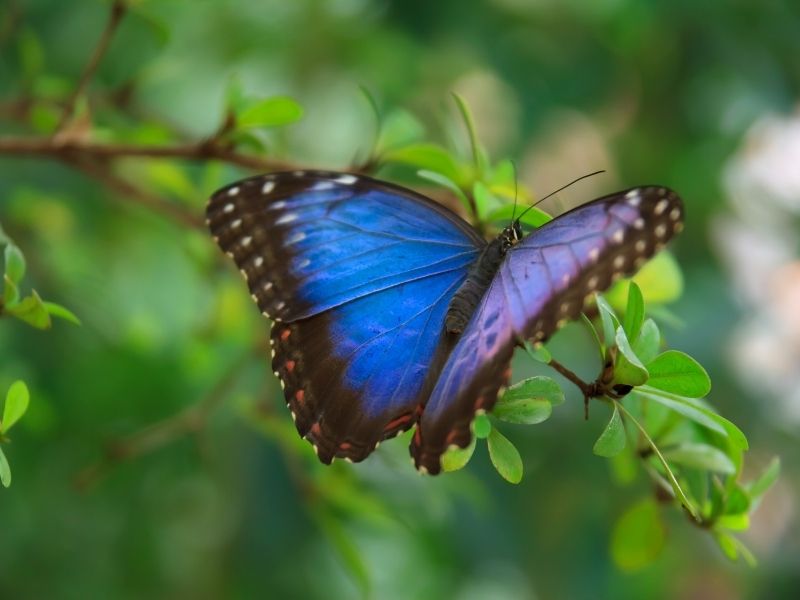Inglés para niños: 10 amazing facts about butterflies
10 datos sorprendentes sobre las mariposas para que los niños aprendan inglés de forma divertida
Publicado por Alba Caraballo, editora de Conmishijos.com
Creado: 1 de junio de 2023 16:06 | Modificado: 9 de abril de 2025 08:22
Te invitamos a leer 10 datos asombrosos sobre las mariposas en inglés: 10 amazing facts about butterflies. Una lectura muy divertida e interesante para niños de Primaria, de la mano de la revista para aprender inglés I Love English Junior (mayo-junio 2021, número 118).
Los niños conocerán datos sorprendentes sobre estos insectos que sufren una de las metamorfosis más asombrosas de la naturaleza. Además, aprenderán nuevo vocabulario y practicarán la lectura en inglés.
Ver +: Lecturas para niños en inglés
10 amazing facts about butterflies: lecturas en inglés para niños

1. Butterflies are wonderful insects. People who study or collect butterflies are called lepidopterists. They are biologists or zoologists who specialize in the behaviour and evolution of butterfly species.
2. Butterflies play an important role in pollinating the plants, flowers and vegetables that we need on the earth. There are about 18,000 species of butterfly. Along with moths, they are the only group of insects that have scales.
3. The world?s largest species of butterfly by wingspan is the Queen Alexandra's Birdwing (28 cm). It was named after Queen Alexandra of Denmark! Unfortunately, it can only be found in Papua New Guinea and is endangered. The world?s smallest butterfly has a wingspan of 0.5-1,3 cm.
4. Butterflies can live between a week and a year, depending on the species. During the winter, some butterflies hide in safe places like under leaves, in caves or even inside houses. This is because they are cold-blooded and need to reach a warm temperature (around 30ºC) to be able to fly.
5. Butterflies have four wings, or two sets of wings, which fold together vertically when they are not in use. Butterflies flap their wings about five times every second! Like all other insects, they have six legs and three main body parts: head, thorax and abdomen. On their heads they also have two long antennae.
6. Butterflies don't chew food. They get all the nutrients they need by shipping nectar, water and fruit through their "proboscis" ? an elongated part of the mouth that works like a straw and a sponge at the same time to be able to absorb liquids.
7. Although many butterflies can taste with their proboscis, they mainly taste with their feet! These are covered with sensory receptors that enable them to taste a flower as soon as they land on it.
8. Male butterflies have slender bodies, while females tend to have rounded abdomen. Also, the markings on their wings differ from one another. Another good way to tell the difference is by their behaviour: females spend most of the time searching for plants on which to lay their eggs and males are often searching for females.
9. The four stages in the life of a butterfly are: egg, larva/caterpillar, pupa/chrysalis, and adult. Most caterpillars don't resemble the beautiful adult butterflies they become later. Although caterpillars sting, butterflies are completely harmless and don´t bite.
10. Butterflies symbolize many things. For example, in Asia, butterflies are synonymous with a long life or love. In some cultures, black butterflies are thought to bring bad news, while white ones mean good luck. But, generally, they represent powerful personal transformation. What do they mean to you?
Artículos relacionados
Inglés para niños: 10 amazing facts about zebras
Te invitamos a leer 10 datos asombrosos sobre las cebras en inglés: 10 amazing facts about the zebras. Una lectura muy entretenida para niños de Primaria, de la...
Inglés para niños: 10 amazing facts about the world's largest and fastest animals
Te invitamos a leer 10 datos asombrosos sobre los animales más grandes y rápidos del mundo en inglés: 10 amazing facts about the world's largest and fastest...
Lecturas en inglés para niños: 10 amazing facts about skyscrapers
¿Quieres saber más sobre los rascacielos? Te invitamos a leer 10 datos asombrosos sobre los rascacielos en inglés: 10 amazing facts about skyscrapers. Una lectura...
Aprende inglés: 10 amazing facts about Scottish kilts
La revista para aprender inglés I Love English Junior invita a aprender y practicar el idioma de forma divertida. Si tienes hijos o alumnos que estén en primaria...
Comentarios
¡Sé el primero en comentar!
















